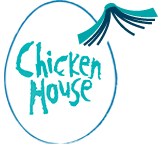The Editorial Process
Thinking of entering the Times/Chicken House Children's Fiction Competition? Kesia unveils the mysterious editorial process ...
Lots of aspiring authors imagine the publishing contract at the end of the road: the ultimate destination. In reality, a contract is the first step on a new journey, requiring a whole new burst of energy, creativity and enthusiasm. But never fear: as editors it’s our job to be your guide. Here’s a sneak peek of what a published author is likely to encounter along the way …
Structural Edit
During the structural edit, we’ll all take a step back and ask the big questions about your novel. What’s it really about? What are the character’s motivations? Does the pace drop in the middle? Should we change the main character’s gender, or introduce a flying elephant, or perhaps an ‘it was all a dream’ ending (probably not)? I’ll supply broad-sweep editorial notes, leaving lots of room for the author’s interpretation.
Line edit
At line-editing stage, we’ll look at bit closer at individual scenes and sentences, considering things like pace and style – maybe it feels like it’s been written all in a rush, or reads too adult or too young. We’ll mark up the manuscript using track changes in Word with liberal use of comment boxes, so the author can see exactly what we're suggesting, and protest as desired!
Copy-edit
Now, we at Chicken House hand over to our Production Managers, who commission a brand spangly new editor to look at grammar, spelling and punctuation, as well as keeping a close eye on any inconsistencies or logical issues … for instance, we may have a 10-month pregnancy in there somewhere, or maybe the main character’s hair inexplicably changes from blonde to brunette halfway through.
Proofreading
After the copy-edit, typesetters turn the Word doc into pages as they will appear in the finished book – now it’s much more fixed, with page numbers, headers and font all specially designed (oo-er). We want as few changes as possible, now, as corrections are costly, but even so we commission a new person – an eagle-eyed proofreader – to give the novel one final sweep for spelling, grammar and other essential corrections. Once these are finished, we hit PRINT!
The Desperate Skim of the Finished Copy to Make Sure We Haven’t Missed Anything Obvious
An unofficial, obligatory and self-explanatory extra stage in the editorial process.
Still baffled? Tweet us at @chickenhsebooks or leave a message in the comments!

No comments yet!
Why not be the first?